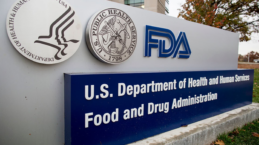

insights
FDA ISSUES FINAL GUIDANCE ABOUT MULTIPLE ENDPOINTS IN CLINICAL TRIALS
On October 21, 2022, the U.S. Food and Drug Administration (FDA) issued the “Multiple Endpoints in Clinical Trials” final guidance for the industry after launching a first draft of the guidance in 2017. This final guidance provides sponsors and review staff with the FDA’s thinking about the issues posed by multiple endpoints in the analysis and interpretation of study results and how these problems can be managed.
To begin, let’s step back. Efficacy endpoints include assessments of clinical events, symptoms, measures of function, or surrogate predictors of clinical benefit. Trials can be designed to examine the effect of a drug on more than one aspect of the disease. Traditionally, the conclusion of whether a trial result is “positive” or “negative,” is based on hypothesis testing of a single primary endpoint. But in some cases, one single measure on its own is insufficient to demonstrate clinically meaningful efficacy or prove to be not feasible for use in a clinical study. As a result, the study may need to combine multiple aspects of the disease into a single endpoint or demonstrate effects on one or a family of endpoints.
But here’s where sponsors may run into big problems. Multiple endpoints can provide multiple opportunities to detect a positive treatment effect, which also increases the risk of falsely concluding that a drug has an effect when it does not. Regulatory authorities and the medical community may reject efficacy claims if the pre-specified analyses do not account for this multiplicity problem.
The final guidance describes various strategies and establishes statistical methods for grouping, sequencing, and weighting endpoints for multiple test analyses to control the chance of making erroneous conclusions about a drug’s effects.
For the intent of this article, we will focus on strategic considerations to de-risk the use of multiple endpoints as sponsors apply the final guidance.
Strategic Considerations to De-Risk the Use of Multiple Endpoints
Sponsors looking to de-risk their multiple endpoint strategy must first confirm the precedence for indication approval using multiple endpoints. They must plan the sufficient size of the study to enable a successful outcome of a drug vs. a control group when statistical analysis accounts for multiple endpoints.
But if there is an absence of precedence, a clear justification to regulatory authorities for the need for multiple usages must be provided. The rationale may include:
- Criticality of multiple aspects of the disease
- Unknowns about the drug’s effect on different aspects of the disease
- Strengths and weaknesses of current available measures
- Feasibility of the study using single vs. multiple endpoints (size, length)
Sponsors must understand the type of errors that need to be managed for the chosen multiple endpoint strategy. For example:
- Multiplicity is an issue when an effect on only one of several primary endpoints is enough to conclude the drug has a significant effect
- The multiplicity problem can be avoided by using a single primary endpoint that contains multiple components or is a composite of several disease aspects, but there is a risk that not all of the components or aspects will trend the same way, reducing the chance of success or interpretability of the result
- There is no multiplicity problem with the use of co-primary endpoints which must both succeed for the study to succeed. However, this introduces the opposite type of error, which is the risk of concluding there is no effect when there actually is one. This is a concern because it is a loss not only for the study sponsor but for future patients who might have benefitted from the treatment
Carefully consider the cross-functional elements that influence a statistician’s determination of the most appropriate multiple-test methods and calculations. For example:
- Determine the relative importance of the multiple endpoints and different likelihoods of success. These would influence whether sequential methods and/or endpoint weighting should be used
- Understand the magnitude and positive and negative nature of the correlation between endpoints. Some statistical methods are less useful when there is a negative correlation
- Ask the question ‘is there enough information available to make assumptions about the correlations, statistical distribution, etc. of the chosen endpoints?’ Some methods can be employed without requiring many assumptions, while others cannot
- Determine whether the secondary endpoints also need to be statistically powered for decision-making
- Assess the levels of sophistication in the statistical analysis that is commensurate with the stage of the study (i.e., a registrational study versus a proof-of-concept study)
Once the strategy is determined, all this information should be included in the draft Statistical Analysis Plan (SAP), which provides detailed descriptions of the endpoints in the study and the corresponding analyses for FDA review. The SAP is an outline of the analytical approach to the quantitative or qualitative data that will be gathered, so it is best to be thoughtful and meticulous during the planning phase.
We also cannot emphasize enough about the value of aligning with the FDA to propel a successful endpoint strategy. Seek FDA comments and advice via formal meetings on protocol design and statistical considerations prior to initiating a pivotal registrational clinical study. Another option to gain FDA alignment is through the use of the Special Protocol Assessment (SPA) procedure, which is a process where developers may ask to meet with the FDA to reach an agreement on the design and size of certain clinical trials well in advance of submitting a marketing application. Gaining FDA agreement through a SPA procedure can greatly de-risk a future marketing application in terms of the substantial efficacy data needed.
Halloran’s clinical development experts enhance development strategies and build new ones from scratch. Whether their clients are focused on mapping out their clinical trial protocol, require strategy and program leadership support for their development roadmap, or need to prepare for regulatory changes before submitting a marketing application, Halloran leverages experience and expertise to enable development and regulatory success.



